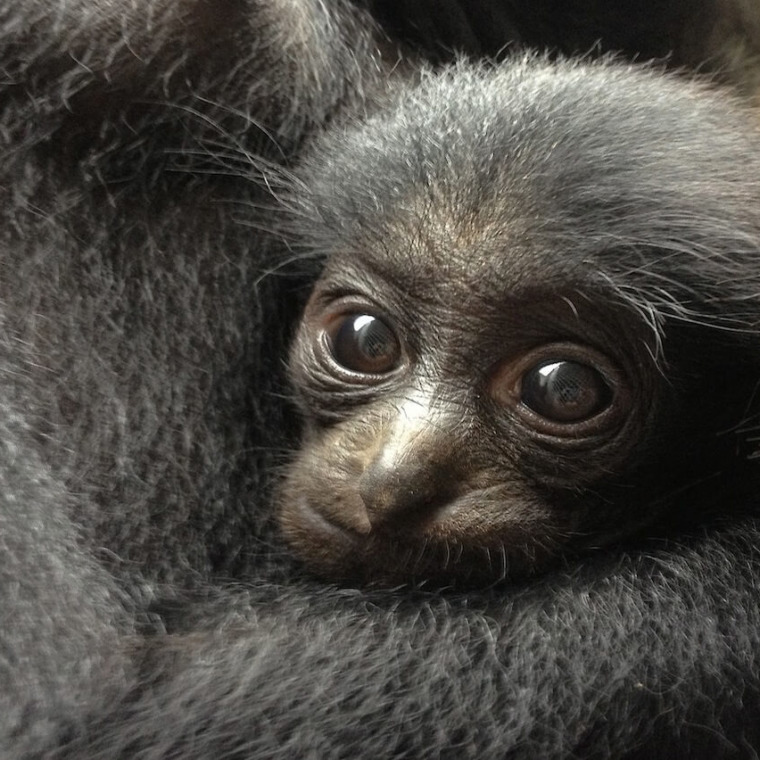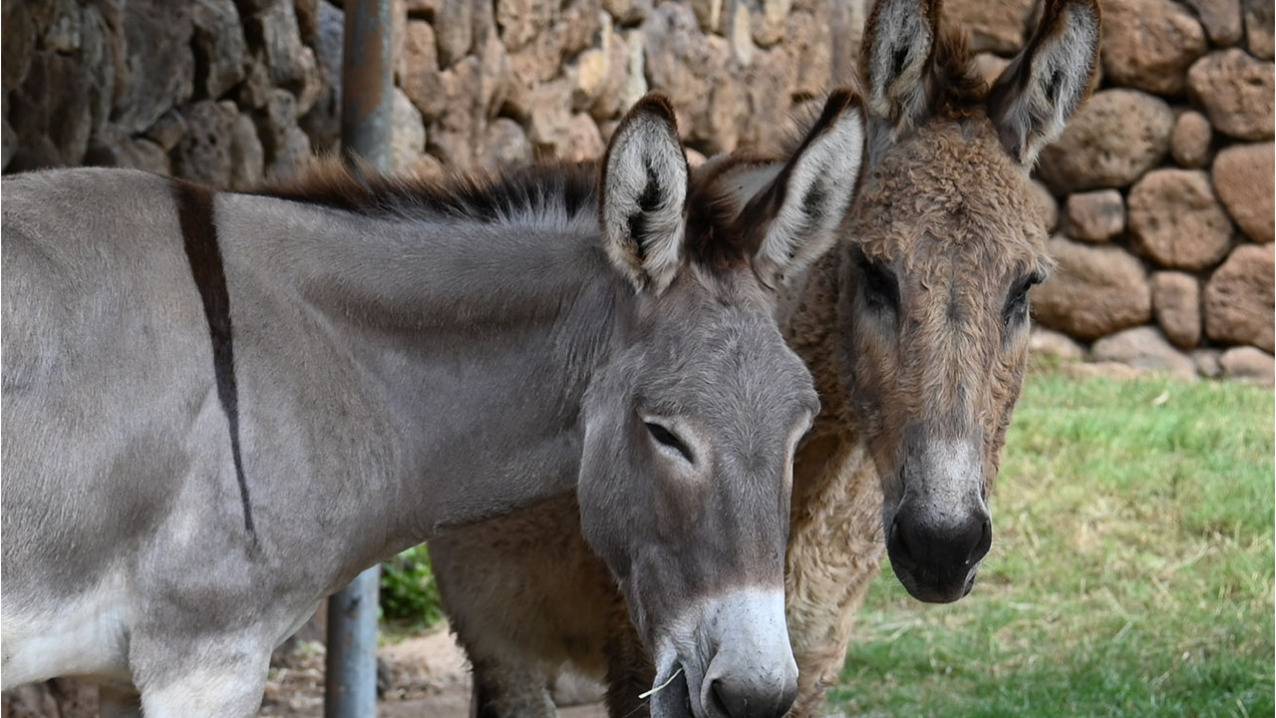Perissodactyla Equidae Equus asinus
Donkeys
About Me
The Hawaiian word for Donkey is Kekake. Our Kekake pair can usually be found behind the stone wall next to Lani Moo’s pen in our Keiki Zoo. The male’s name is Eeyore and the female is Dusty. Both were brought to Oahu from the Big Island during an operation to reduce the population of feral donkeys by relocation. When their ancestors were no longer required to work on coffee plantations, they were released into the deserts of Kona. However, conflict with human developement has put these culturally significant animals at risk.
While globally, donkeys are not endangered, their wild ancestor, the African wild ass, is critically endangered due to development. In addition, donkey meat is fast becoming a popular food for many Chinese populations, to the point where pet donkeys are being abducted or stolen from farms.
Donkey is a nickname for the ass, used in all parts of the world. The small gray donkey of northern Africa was the progenitor of the Kona Nightingale breed currently residing at our zoo.
Donkeys are slower in their movements than horses, but also hardier and more affordable, which makes them preferable as work animals, especially in areas where horses do not thrive or where poverty prevents their purchase.
The true wild ass is found only in northern Africa. They have been domesticated for centuries, and it is generally accepted that asses, or donkeys, were domesticated on the shores of the Mediterranean Sea. From there they found their way east and later, to all parts of the world. The Donkey is essentially a southern animal partial to hot and dry climates. The majority of donkeys in Hawaii are found on desert regions of the chain’s largest island, where they were originally imported to work on coffee farms.
As herbivores, donkeys feed mainly on grass, which includes some browsing. In the zoo they are fed grass, hay, zoo ration, trace minerals, and treats such as carrots and apples.
Donkeys are complex creatures, capable of many moods. They can be friendly, affectionate, independent, patient, and even sad, and there is no questioning their intelligence. But when a donkey would rather not do something, it can be the laziest and most stubborn creature in the world.
Like horses and ponies, donkeys are capable of biting and kicking with both hind legs. However, such behavior is unlikely from any animal accustomed to children unless there is a great deal of provocation.
In the wild, donkeys travel in herds up to 100 in number, usually led by a male. Although they are gregarious by nature, the herd breaks up at foaling time. Donkeys are most active in the evening, but also move about during the day and at night. When threatened, their defense is to run or bite.
The gestation period for donkeys is approximately 12 months. There is usually just one foal, which is able to stand up within minutes after birth. The foal remains with its mother for about five months. Females achieve puberty at one year. The donkey’s life span is 25 to 30 years.
Most donkeys are the result of so much cross-breeding that it is impossible to define their race with any precision.
The male donkey is called jack or jackass.
The female donkey is called the jenny.
A mule is the offspring of a jackass (male donkey) and a mare (female horse).
A hinny is the offspring of a stallion (male horse) and a jenny (female donkey).
Other Mammals

Sacred Baboons are common throughout northeastern Africa, but are extinct in the Nile region and Egypt, where they originally received their name and were worshiped by the ancient Egyptians.

Bongo are most active at dawn and dusk, and often forage near the edges of wooded areas. They normally shy in the wild and flee into the forest for cover at the slightest provocation.

The North African crested porcupine is nocturnal. They are very adaptable and can be found in forests, on plantations, in rocky or mountainous areas as well as in deserts.

Sloths are found in Central and South America in the rain forest canopy. The Linne’s two-toed sloth is found in such countries as Nicaragua, Columbia, Venezuela, Surinam, Guyana, French Guiana, North Central Brazil, and Northern Peru.

Siamangs range through southeastern Asia and are found in some numbers in the Malay Peninsula and Sumatra.




